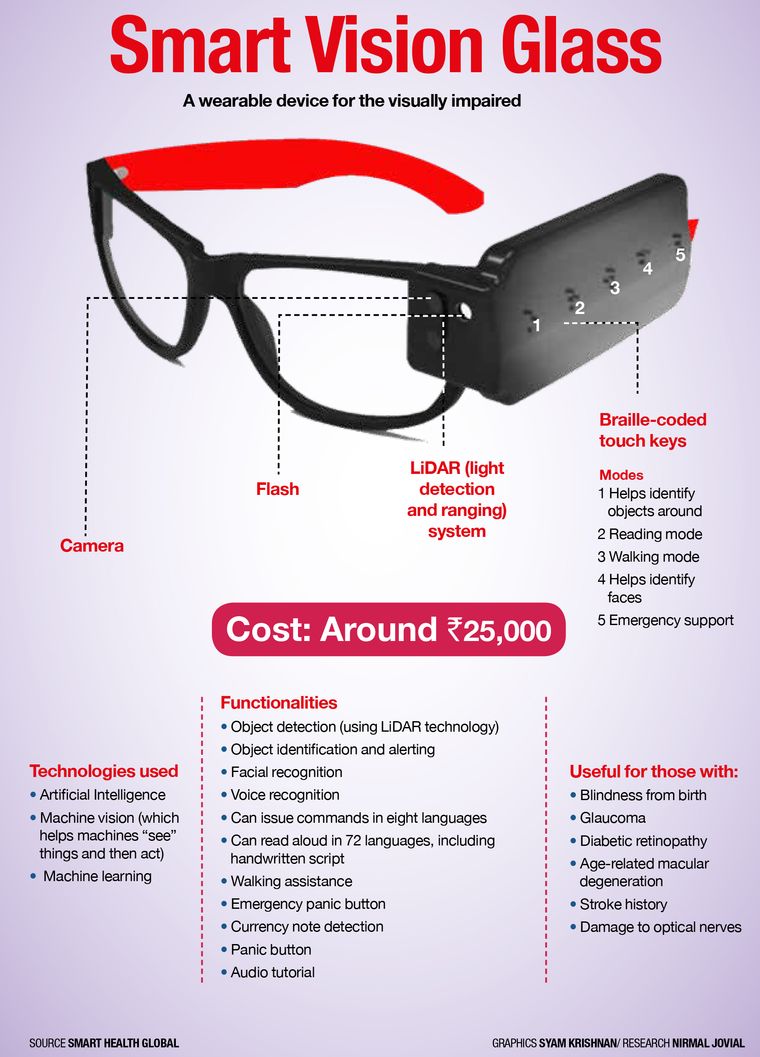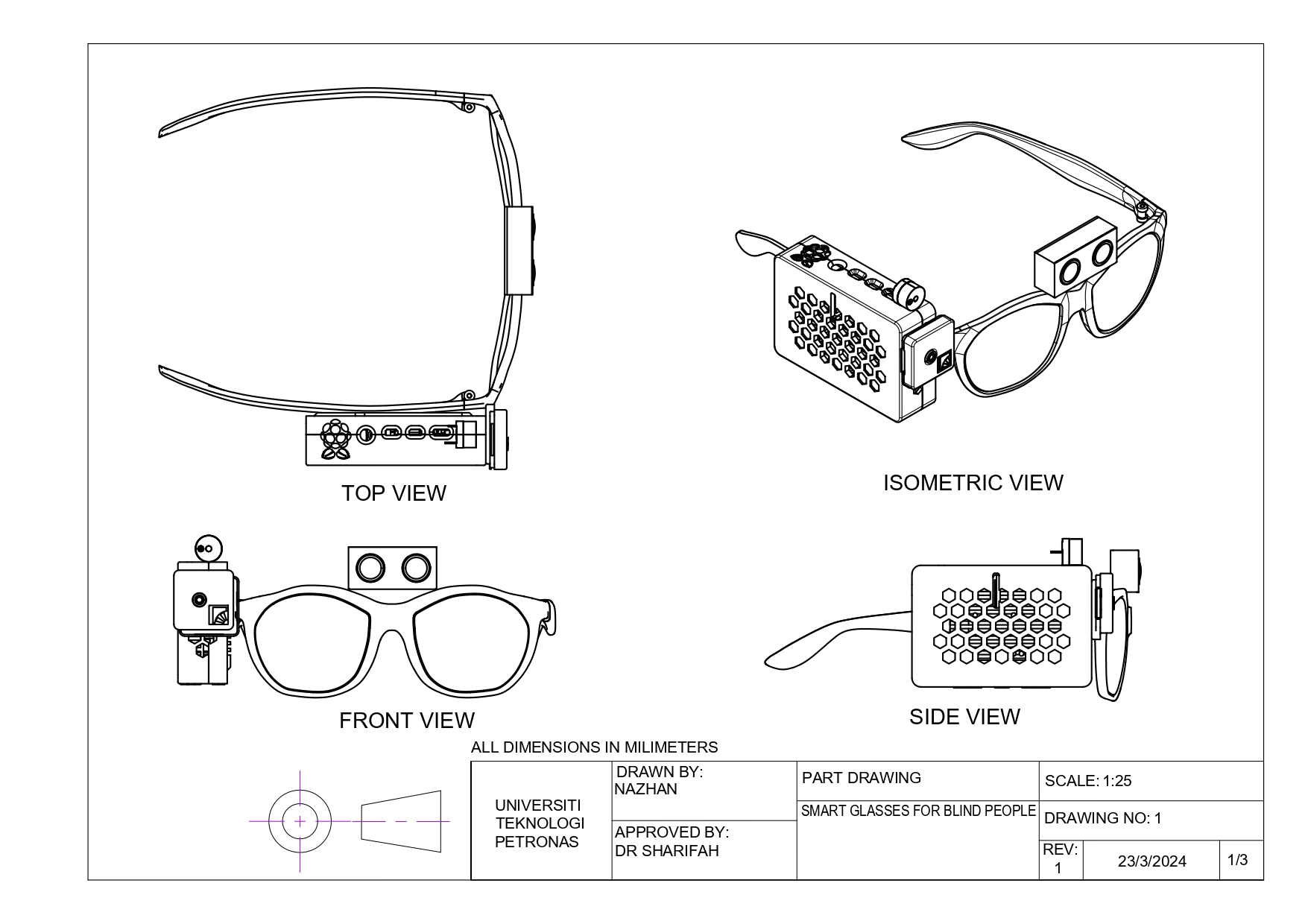How Smart Glasses for the Visually Impaired Are Revolutionizing Daily Life
Cutting-edge Solutions in Assistive Modern Technology for Visual Problems
The landscape of assistive technology for visual impairment is evolving rapidly, presenting a series of innovative solutions that enhance ease of access and independence. From advanced smartphone applications that facilitate navigating to wearable tools created for real-time support, these devices are improving the experiences of those with visual impairments. Moreover, the integration of clever home modern technologies and instructional sources has the prospective to cultivate greater neighborhood involvement. Nevertheless, the ramifications of these innovations increase vital questions concerning their availability and effectiveness in varied contexts, calling for a closer examination of their more comprehensive effect.
Improvements in Smart Device Applications
In the last few years, improvements in smart device applications have considerably changed the landscape of assistive technology for individuals with aesthetic problems. These applications leverage the powerful sensors and abilities of modern-day smartphones to supply customers with devices that boost independence and ease of access in their lives.
Remarkable amongst these developments are applications made for object recognition, which use the mobile phone's electronic camera to recognize items and supply spoken summaries. Such functions equip individuals to navigate their atmospheres better, whether determining products in stores or locating personal possessions at home. Additionally, text-to-speech applications have enhanced substantially, enabling customers to record published text with their device's camera and get immediate sound comments, thus helping with reading and understanding.
Navigating applications customized for aesthetically impaired users have actually additionally emerged, providing auditory advice and in-depth area information. These tools provide critical assistance for wheelchair, enabling users to go across unfamiliar rooms with self-confidence. In addition, community-driven applications have actually cultivated social communication and resource sharing amongst individuals with visual disabilities, developing a helpful network that improves their high quality of life. Overall, mobile phone applications have ended up being essential allies in promoting freedom and ease of access for individuals with aesthetic impairments.
Wearable Tools for Navigating
Wearable devices for navigation have actually arised as a groundbreaking remedy for individuals with visual problems, offering hands-free help that boosts wheelchair and orientation. These devices commonly utilize sophisticated innovations, consisting of GPS, ultrasonic sensing units, and expert system, to offer real-time comments and instructions to customers as they browse their environment.
One notable example of wearable navigation technology is smart glasses, which can detect obstacles and relay auditory or haptic responses to the user, enabling risk-free and efficient activity in different settings. Other tools, such as belts and vests furnished with sensors, can in a similar way educate customers of their surroundings by offering alerts concerning close-by objects or changes in terrain.
Additionally, many wearable tools integrate with smartphone applications, making it possible for individuals to customize their navigating choices and obtain tailored path tips. This personalization can significantly boost the individual experience, encouraging people to travel with higher confidence and self-reliance.
As innovation remains to establish, the capacity for wearable navigation devices to enhance the quality of life for individuals with visual problems remains significant, paving the method for even more inclusive and easily accessible environments.
Smart Home Modern Technology Integration

Moreover, smart appliances equipped with tactile interfaces or auditory feedback give intuitive communications that provide additional hints especially to the demands of those with aesthetic problems. Clever fridges can announce their contents and expiration days, while clever ovens can direct users through the food preparation procedure with audio directions.
Home automation systems, such as smart doorbells and safety video cameras, offer comfort by permitting individuals to receive alerts and accessibility live feeds by means of their mobile optical doctor phones, boosting individual security (AI-powered visual aids). In addition, assimilation with tablet computers and mobile phones guarantees that customers can handle their home environment from anywhere within their premises
As clever home innovation continues to progress, it holds the possible to transform the living experiences of people with visual impairments, promoting independence and improving lifestyle in a significantly connected globe.

Educational Devices and Resources
Access to efficient educational tools and sources is critical for individuals with aesthetic impairments, as it encourages them to involve completely in their discovering experiences. Various assistive innovations have actually been established to boost ease of access and foster independent understanding. Screen viewers, as an example, convert message into speech, permitting students to gain access to electronic content flawlessly. AI-powered visual aids. Additionally, refreshable braille screens give tactile comments, making it less complicated for learners to interact with composed product.
Moreover, educational software application particularly made for aesthetically damaged customers offers features such as high-contrast modes and adjustable text sizes. These tools fit diverse discovering designs and make sure that trainees can tailor their academic experience to their requirements.
Moreover, accessibility to digital libraries and audio books expands the series of available learning materials, enabling pupils to discover topics detailed without the restrictions imposed by conventional print resources. Collaborative systems that include availability functions additionally facilitate team jobs, guaranteeing that visually damaged pupils can contribute meaningfully alongside their peers.
Community Assistance and Interaction
A robust network of area assistance and official statement involvement is necessary for individuals with visual problems, promoting an inclusive setting where they can prosper. Community companies, regional advocacy teams, and volunteers play a critical role in providing sources, information, and friendship, which are important for enhancing the top quality of life for those impacted by aesthetic disabilities.
Involvement tasks such as workshops, get-togethers, and support system not just promote skill development but also promote social interaction, decreasing feelings of isolation. These initiatives encourage individuals to share successes, experiences, and challenges, thereby reinforcing area bonds. In addition, collaborations with regional organizations can lead to better access in public rooms, additionally integrating individuals with visual problems right into the neighborhood.
Technology also boosts neighborhood involvement via on the internet platforms that offer digital assistance groups and resources, permitting individuals to connect despite geographical obstacles. By utilizing both in-person and digital options, communities can develop a detailed support network. Ultimately, cultivating partnership amongst different stakeholders-- including family members, teachers, and medical care specialists-- makes sure that people with visual impairments get the alternative assistance necessary to navigate day-to-day live successfully and with self-respect.
Final Thought
Innovative options in assistive technology for aesthetic impairment significantly improve the quality of life for people encountering these difficulties. The integration of smart device applications, wearable tools, clever home technology, and academic tools fosters better freedom and access. Neighborhood assistance and engagement additional equip aesthetically damaged individuals, promoting inclusivity and involvement in numerous aspects of life. Collectively, these advancements not just change day-to-day experiences but likewise lead the means for a more equitable society.
The landscape of assistive innovation for visual disability is progressing quickly, providing a variety of ingenious services that improve ease of access and independence. Community-driven applications have fostered social interaction and source sharing amongst people with aesthetic disabilities, producing a supportive network that enhances their top quality of life. On the whole, smart device applications have actually ended up being important allies in promoting autonomy and access for people with aesthetic impairments.
Many individuals with aesthetic problems are discovering higher freedom through the assimilation of wise home technology.Innovative services in assistive innovation for visual impairment dramatically enhance the high quality of life for people encountering these challenges.